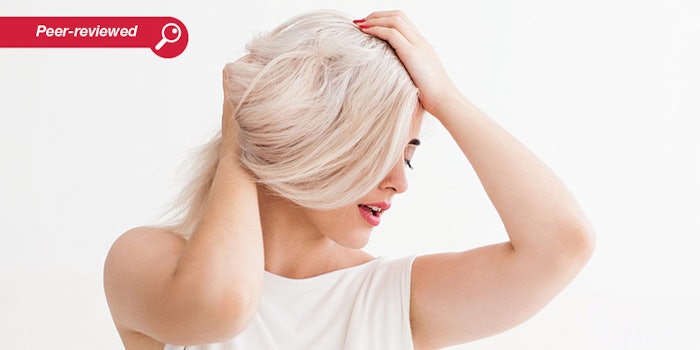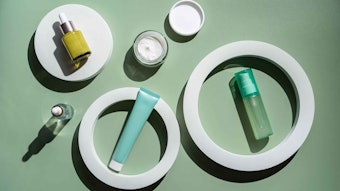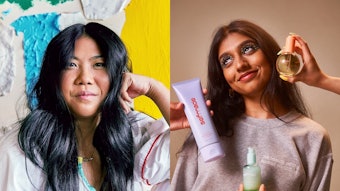
Read the full article in the February 2021 digital edition. . .
A natural look, youthful appearance, protection from the environment and more are everyday expectations from consumers when it comes to intensive use and aesthetics-related products. Key demands concern mildness and sustainability, in particular, conjugated as complete respect for delicate cutaneous and hair structures. Treatment efficacy also should be sensorially perceived almost immediately and even after the product’s use.
In hair cleansing formulations, a great variety of chemical structures may be encountered, such as surfactant systems that are standard and cheap, mild and well-tolerated, green and eco-friendly, etc. On the contrary, in the field of conditioning systems, an overview of commercial product labels shows fewer vehicles and conditioner combinations. Such intensive repetition might be justified by these systems nearing their optimal performance goals. However, in the last few years under the powerful push of sustainability and “clean” beauty, the research for alternative conditioner systems has grown progressively.
This research has also been propelled by the well-known increase in the average age of consumers and the related boost in the use of hair colorants. In the EU, for example, nearly 70% of women use hair colorants. This rate is even higher in the United States, where more than 75% of women use hair colorants.
To understand the various damages incurred by hair due to cleansing, coloring and other chemical and physical assaults, it is first helpful to understand some of its basic biological attributes. From there, products can be developed to condition and return hair to a healthier state.
Hair Shaft Condition
The hydrophobicity of hair is possible thanks to the presence of 18-methyleicosanoic acid (18-MEA), a branched fatty acid, on its surface. Intensive damage due to chemical treatments such as perming and dyeing can remove this covalently linked fatty acid, consequently making the fibers hydrophilic. A decrease in the hydrophobicity of hair causes the deterioration of its sensory properties, including entanglement during hair cleansing, dryness at low humidity conditions and swelling under high humidity conditions.
Hair damage caused by chemical procedures can be minimized, avoided or even repaired to some extent by the correct use of hair care products. These may enhance hair hydrophobicity, strengthen the cuticle and minimize electrical charges and frictional forces.1-3 One common formulation strategy is the deposition of a substance onto hair by dilution or physicochemical affinity in order to form a protective, natural-looking film. This approach “repairs” the hair by modifying the superficial properties of keratin structures that have been modified by frequent washing or aggressive treatments.
To date, most cosmetic products attempt to improve the condition of hair by depositing substances onto its external surface. This is because the hair cannot be modified physiologically since the cells are dead, and significant improvements in hair physiology and condition are strictly related to a wide range of factors and environmental conditions, not fully identifiable in terms of influence and possible solutions.4-7
However, some recent studies have correlated hair’s appearance to changes in its structure. Age-related white hair, for example, has a higher amount of carbonylated proteins compared with dark hair from the same individual, which results in decreased water-retention capabilities and a water-related irregular hair shape. If treated with a 5-ethyl-2-methylpyridine borane complex, the reductive amination reaction can decrease the number of carbonylated proteins, resulting in improvements in interactions with water and hair shape.8
In addition, structural details and properties of the under-investigated hair medulla have been identified and uncovered two types: black and white. White medulla appears less damaged or undamaged, with good optical properties and a less porous structure. Porous black medulla, on the other hand, can be converted to a white medulla-like form by filling its structure via chemical reduction conditions. This approach to gray hair could improve its transparency, making it appear clearer and more attractive.9
Quaternary Compounds
Apart from the notion of modifying the inner structure of hair, most products on the market ground their ability to improve the organoleptic parameters of hair through so-called conditioners. To function, conditioners must be adsorbed onto the surface of the hair and remain substantive, even after subsequent cleansing. As the hair surface (cuticle) is predominantly proteic in nature, and considering its isoelectric point equal to approximately 3.7, most conditioners are cationic in order to remain adsorbed onto the hair surface and modify its chemical-physical characteristics.
In relation, the origin of 2-in-1 conditioning shampoos can be dated to the introduction of polyquaternium-10 in 1970. Here, the innovative concept of polymer-surfactant complexes gave rise to one phase systems that successively separated upon dilution during the shampooing process to deposit the conditioning agents onto the hair.10, 11
As a general rule, for the monoalkyl trimethyl ammonium compounds, the shorter the length of the long alkyl chain (lauryl or cocoyl), the higher its water solubility and the lower its conditioning capacity. On the contrary, the longer the length of the alkyl chain (stearyl or behenyl), the lower the solubility in water and the higher the conditioning capacity.
Silicones
Other key ingredients for conditioners are silicones. In the 1970s, the hair conditioning properties of silicone chains began to play a significant role in products such as hair dyes, permanent waves and conditioners. Silicones first appeared in shampoos in the 1980s, and they played a major role in the development of 2-in-1 shampoos in the 1990s.
Shampoos containing more than one cationic conditioning polymer and a quaternary silicone molecule offer a more uniform deposition onto the hair than a standard shampoo based on polyquaternium-10.12 If linear polydimethylsiloxane is the best option for improving wet and dry combability, amino silicones are good to improve hair smoothness and reduce the fly-away effect. Phenyl silicone derivatives are the best for improving hair shine. Solely silicone structures should be always associated with some alkyl silicone derivatives to improve the compatibility with hydrocarbon chains and the stability of formulations; see Formulas 1 and 2 for examples).13
Conditioning Proteins and Oils
Today, hydrolyzed proteins are claimed to be green alternatives to synthetic conditioner ingredients but these ingredients are not new. The first hydrolyzed protein developed for personal care applications was prepared in the early 1900s.14 At that time, researchers at a German company verified that during bleaching and permanent waving, the addition of hydrolyzed collagen at a level as high as 10% proved markedly less damaging to the hair. Similar work also showed hydrolyzed proteins to reduce cuticle damage and fiber embrittlement when applied during bleaching and waving processes.15
. . .Read more in the February 2021 digital edition. . .
References
- McMichael, A.J. (2007). Hair breakage in normal and weathered hair: Focus on the black patient. J Investig Dermatol Symp Proc 12 6-9.
- Robbins, C.R. (2013). Chemical and Physical Behavior of Human Hair. New York: Springer.
- Swift, J.A. (1999). The mechanics of fracture of human hair. Int J Cosmet Sci 21 227–39.
- Trüeb, R.M. (Aug 3, 2005). Aging of hair. J Cosme Dermatol 4 60-72. Available at: https://onlinelibrary.wiley.com/doi/abs/10.1111/j.1473-2165.2005.40203.x
- Piérard-Franchimont, C., Xhauflaire-Uhoda, E., Loussouarn, G., Saint Léger, D. and Piérard, G.E. (2006, Jan). Dandruff-associated smouldering alopecia: A chronobiological assessment over 5 years. Clin Exp Dermatol 31(1) 23-6. Available at: https://pubmed.ncbi.nlm.nih.gov/16309472/
- Piérard-Franchimont, C., Xhauflaire-Uhoda, E. and Piérard, G.E. (2006). Revisiting dandruff. Int J Cosmet Sci 28 311-318.
- Pitney, L., Weedon, D. and Pitney, M. (2016, Aug). Is seborrhoeic dermatitis associated with a diffuse, low-grade folliculitis and progressive cicatricial alopecia? Australas J Dermatol 57(3) 105-107. Available at: https://pubmed.ncbi.nlm.nih.gov/25753934/
- Fuse, N., et al. Age-related Carbonylation of Hair Causes Irregular Shape. The IFSCC Congress 2020 Yokohama.
- Mannari, T., et al. Unveiling hair medulla structure can change grey hairs appearance. A Novel Concept “Hair Medulla Care.” The IFSCC Congress 2020 Yokohama
- Goddard, E.D. and Ananthapadmanabhan, K.P. (1993). Interactions of surfactants with polymer and proteins. J Dispers Sci Tech 15(3) 1-427. Available at: https://www.tandfonline.com/doi/abs/10.1080/01932699408943565
- Goddard, E.D. and Gruber, J.V. (1999). Principles of polymer science and technology in cosmetics and personal care. Cosme Sci Tech 22. Available at: https://pdfslide.net/documents/principles-of-polymer-science-and-technology-in-cosmetics-and-personal-care-56884d79bd44b.html
- Niemiec, S.M. (2003, Sep 18). Novel detergent compositions with enhanced depositing, conditioning and softness capabilities. US Patent Application 2003/0176303.
- Schaefer, K. (2008, Nov 3). Silicones in hair care: Making innovative solutions possible. Cosme & Toilet. Available at: https://www.cosmeticsandtoiletries.com/formulating/function/moisturizer/7653302.html
- Johnsen, V.L. (1977, Dec). Innovations in protein products and technology. Cosmet & Toilet 92 29-36.
- Bouthilet, R.J. and Karler, A. (1965, Dec). Cosmetic effects of substantive proteins. Proceedings of the Scientific Section of the Toilet Goods Association 44 27-31.











